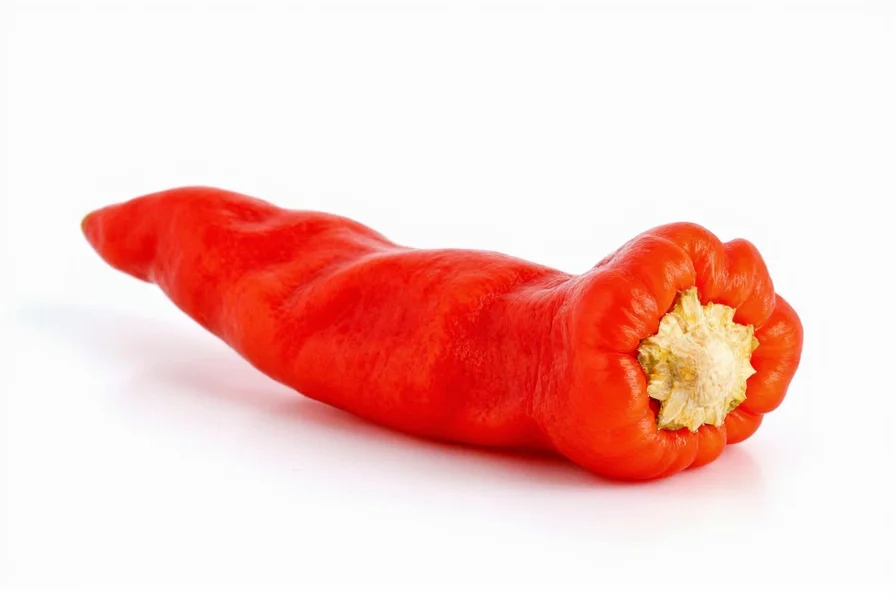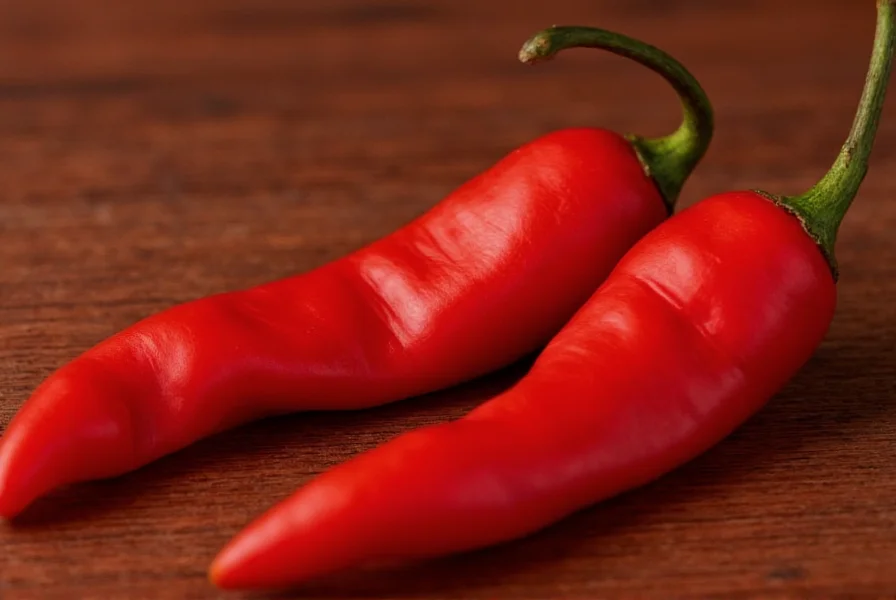Understanding how spicy is a ghost pepper requires examining both scientific measurements and practical experience. The ghost pepper's heat comes from capsaicinoids, primarily capsaicin, which trigger pain receptors in the mouth and throat. When you bite into a ghost pepper, you'll initially taste its fruity, smoky flavor before the intense burning sensation peaks after 30-45 seconds and can last up to 30 minutes.
Measuring Ghost Pepper Heat: The Science Behind the Burn
The Scoville scale, developed by Wilbur Scoville in 1912, measures chili pepper heat by determining how much sugar water is needed to dilute the capsaicin until it's no longer detectable. Modern testing uses high-performance liquid chromatography (HPLC) for precise capsaicin measurement, then converts to Scoville Heat Units.
Ghost peppers earned their place in the Guinness World Records in 2007 as the world's hottest pepper, with an average rating of 1,001,304 SHU. However, individual peppers vary significantly based on growing conditions, soil composition, and climate. The same plant can produce peppers ranging from "only" extremely hot to record-breaking levels.
| Pepper Variety | Scoville Heat Units (SHU) | Heat Comparison to Jalapeño |
|---|---|---|
| Ghost Pepper (Bhut Jolokia) | 855,000-1,041,427 | 200-400x hotter |
| Habanero | 100,000-350,000 | 20-70x hotter |
| Cayenne | 30,000-50,000 | 6-10x hotter |
| Jalapeño | 2,500-8,000 | Baseline |
| Carolina Reaper | 1,400,000-2,200,000 | 280-440x hotter |
Factors That Influence Ghost Pepper Spiciness
Several elements affect how spicy is a ghost pepper from one specimen to another:
- Water stress: Peppers grown with less water produce more capsaicin as a defense mechanism
- Soil composition: Nutrient-rich soil can increase heat levels
- Climate conditions: Hotter temperatures generally yield spicier peppers
- Ripeness: Fully ripe red ghost peppers tend to be hotter than green ones
- Plant genetics: Different ghost pepper strains have varying heat potentials
Interestingly, the heat isn't evenly distributed throughout the pepper. The placenta (white ribs inside the pepper) contains the highest concentration of capsaicin, while the seeds themselves contain minimal heat (they just absorb capsaicin from the placenta).

Safety Considerations When Handling Ghost Peppers
Understanding how hot is a ghost pepper means recognizing the potential risks. The capsaicin concentration in ghost peppers can cause:
- Skin irritation and burning sensations (always wear gloves when handling)
- Respiratory distress when cutting or processing
- Severe gastrointestinal distress when consumed
- Potential anaphylactic reactions in sensitive individuals
If you accidentally touch your eyes after handling ghost peppers, immediately flush with milk or a 2% lidocaine solution—water will spread the capsaicin and worsen the burning. For skin exposure, use vegetable oil or alcohol-based solutions before washing with soap and water.
Culinary Applications of Ghost Peppers
Despite their intense heat, ghost peppers offer complex flavor profiles that chefs utilize carefully. The initial taste reveals smoky, sweet, and slightly floral notes before the heat builds. In traditional Northeast Indian cuisine (where ghost peppers originated), they're used in small quantities to add depth to chutneys and meat dishes.
When cooking with ghost peppers, remember:
- Start with tiny amounts—a single seed can transform a dish
- Heat intensifies over time, so wait before adding more
- Fat and dairy help counteract the burn (use yogurt or coconut milk)
- Acidic ingredients like lime juice can balance the heat
Ghost Pepper vs. Other Super-Hot Peppers
While ghost peppers were once the undisputed champions of heat, newer varieties have surpassed them. The Carolina Reaper currently holds the Guinness World Record at approximately 1.6 million SHU, with some specimens reaching over 2 million SHU. However, ghost peppers remain popular for their distinctive flavor profile that many find more complex than newer super-hots.
Compared to habaneros (which many consider extremely hot), ghost peppers deliver a more intense, longer-lasting burn that affects more areas of the mouth and throat. Habaneros typically max out around 350,000 SHU, while even the mildest ghost peppers start at 855,000 SHU.
Physiological Effects of Consuming Ghost Peppers
Eating a ghost pepper triggers a cascade of physiological responses:
- Endorphin release (creating a "pepper high")
- Increased heart rate and sweating
- Temporary numbness in the mouth
- Potential nausea or vomiting in sensitive individuals
- Metabolic boost that can last several hours
Research suggests capsaicin may offer health benefits including pain relief, improved metabolism, and potential anti-cancer properties—but these benefits come with significant discomfort at ghost pepper concentrations. Most experts recommend consuming ghost peppers in moderation, if at all.
Common Misconceptions About Ghost Pepper Heat
Several myths persist about how spicy is a ghost pepper:
- Myth: The seeds are the hottest part
Reality: The placenta (white ribs) contains the most capsaicin - Myth: Drinking water helps relieve the burn
Reality: Water spreads capsaicin; dairy or fats are more effective - Myth: All ghost peppers are equally hot
Reality: Heat varies significantly based on growing conditions - Myth: Heat tolerance builds permanent immunity
Reality: Tolerance is temporary and resets after periods without exposure
Conclusion: Understanding Ghost Pepper Heat in Context
When evaluating how spicy is a ghost pepper, remember that heat perception is subjective and influenced by individual physiology, previous exposure, and even psychological factors. While the Scoville measurement provides an objective standard, your personal experience may vary.
Ghost peppers occupy a unique space in the chili pepper world—not quite the hottest anymore, but offering a distinctive flavor-heat combination that continues to captivate spice enthusiasts. Whether you're considering growing them, cooking with them, or simply satisfying your curiosity about extreme heat, understanding their precise heat level helps ensure safe and enjoyable experiences with these remarkable peppers.
Frequently Asked Questions
How many times hotter is a ghost pepper than a jalapeño?
A ghost pepper is typically 200-400 times hotter than a standard jalapeño. While jalapeños measure 2,500-8,000 Scoville Heat Units (SHU), ghost peppers range from 855,000 to over 1 million SHU. This means even the mildest ghost pepper is significantly hotter than the hottest jalapeño you might encounter.
What does eating a ghost pepper feel like?
Eating a ghost pepper produces an intense experience that unfolds in stages: first a fruity, smoky flavor, followed by building heat that peaks at 30-45 seconds. The burning sensation affects the entire mouth, throat, and sometimes spreads to the face. Physical reactions often include sweating, tearing eyes, and increased heart rate. The intense burn typically lasts 15-30 minutes, though residual effects can persist for hours. Many people experience endorphin release that creates a temporary "high" sensation after the initial pain subsides.
Can ghost peppers cause permanent damage?
While consuming ghost peppers is generally safe for healthy adults in moderation, extremely high consumption could potentially cause temporary gastrointestinal damage. There are documented cases of ghost pepper consumption leading to thunderclap headaches, esophageal tears, and severe stomach pain requiring medical attention. However, these are rare occurrences. For most people, the primary risks are temporary discomfort and potential allergic reactions. People with gastrointestinal conditions like ulcers or IBS should avoid ghost peppers entirely.
How do you reduce the burn from a ghost pepper?
Milk, yogurt, or other dairy products are most effective for reducing ghost pepper burn because casein protein binds to capsaicin and helps wash it away. Sugar or honey can also help neutralize the burn. Avoid water, as it spreads capsaicin rather than dissolving it. For skin exposure, use vegetable oil or alcohol-based solutions before washing with soap. If experiencing severe burning, a 2% lidocaine solution can provide temporary relief for mouth burns, while milk of magnesia works well for stomach discomfort.
Why are ghost peppers so much hotter than regular peppers?
Ghost peppers contain significantly higher concentrations of capsaicinoids, particularly capsaicin, which is the compound responsible for heat in chili peppers. Through natural selection and cultivation, ghost peppers developed this extreme heat as a defense mechanism against mammals that might eat and destroy their seeds. Unlike birds (which disperse seeds intact), mammals chew seeds, so peppers evolved to be unpleasant to mammalian palates. The specific genetic makeup of ghost peppers allows them to produce capsaicin at levels far exceeding common culinary peppers.











 浙公网安备
33010002000092号
浙公网安备
33010002000092号 浙B2-20120091-4
浙B2-20120091-4